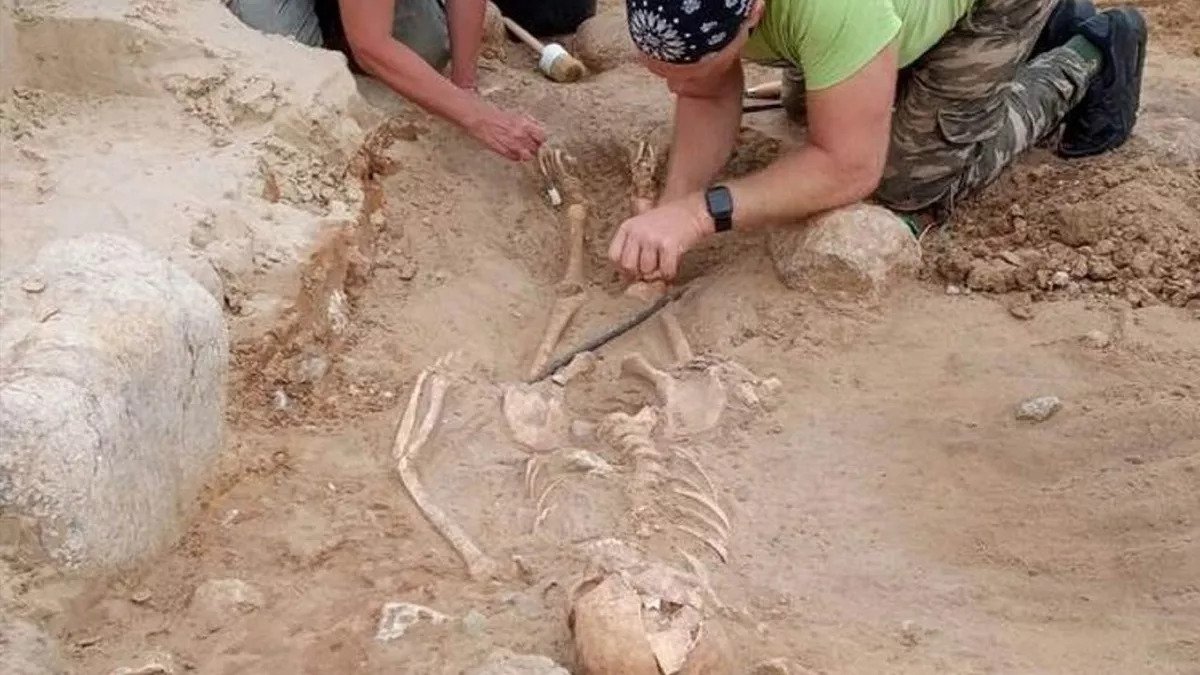400-year-old ‘vampire child’ with padlocked ankle unearthed in Poland
The ghoulish remains of a ‘vampire child’ have been found in a cemetery of lost souls. Archaeologists uncovered the 17th century skeletal remains lying face down with a triangular padlock attached to its foot in the village of Pień, Poland.
The child is thought to have been around five to seven years old.
Archaeologist Dariusz Poliński from the University of Nicolaus Copernicus said: ‘The padlock under the foot symbolises the closing of a stage of life and is meant to protect against the return of the deceased, which was probably feared.
‘Such practices originated in folk beliefs and are sometimes described as anti-vampiric.’
He added that according to the rituals of the time, being buried face down was believed to make the deceased ‘bite into the ground and not harm the living.’
Archaeologists also uncovered over 30 other burials at the necropolis which they believe was where people who were ‘feared not only during life, but also after death’, were buried.
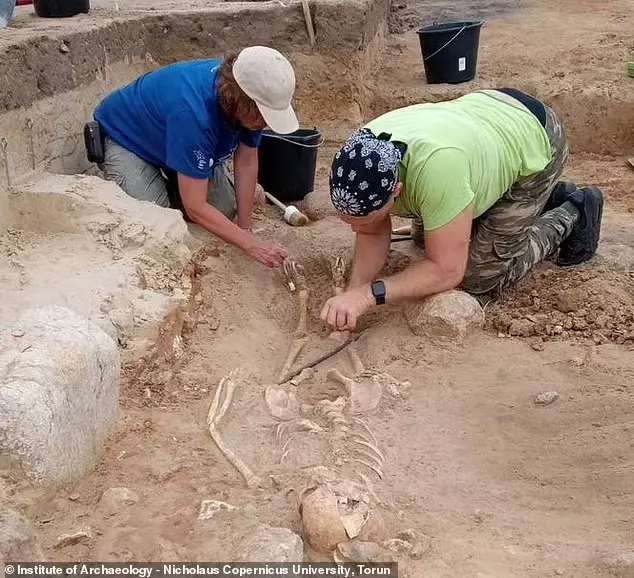
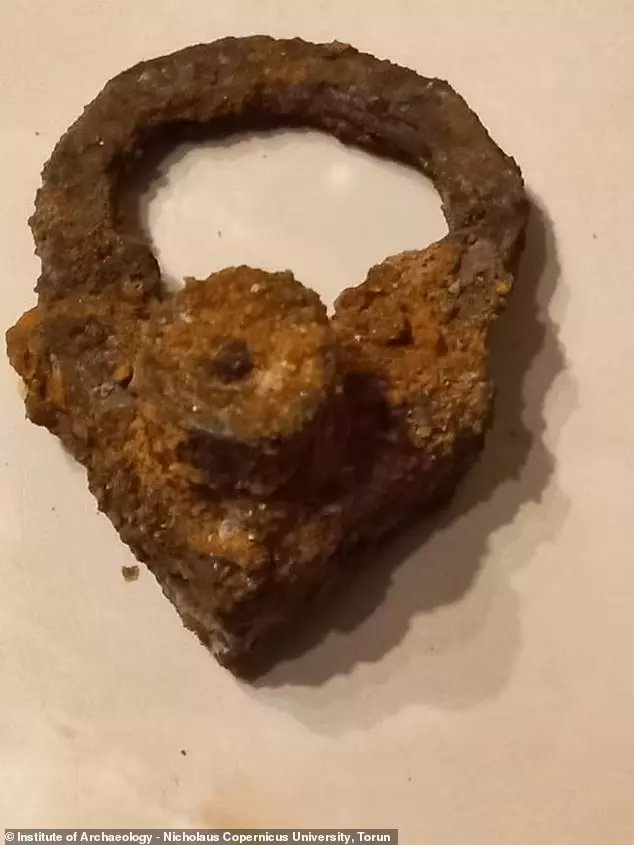
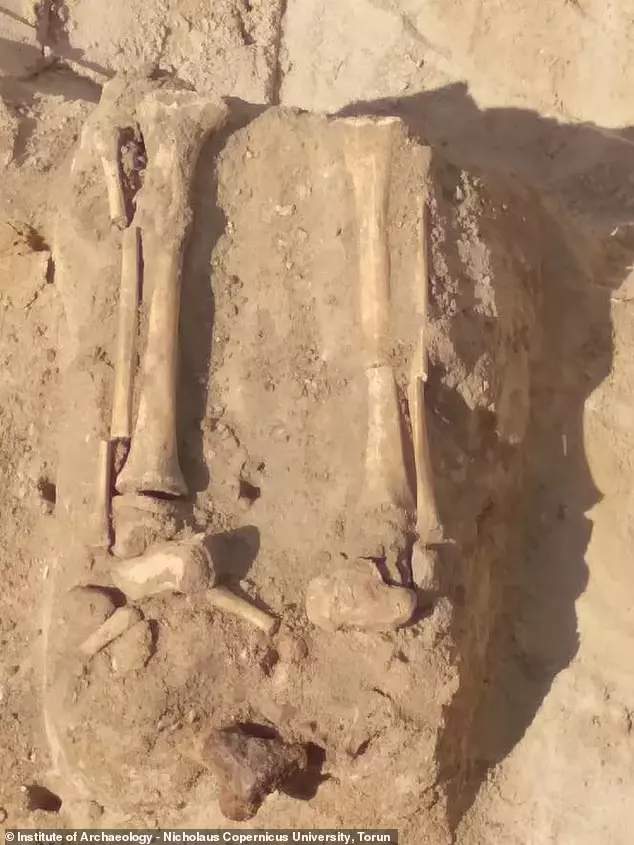
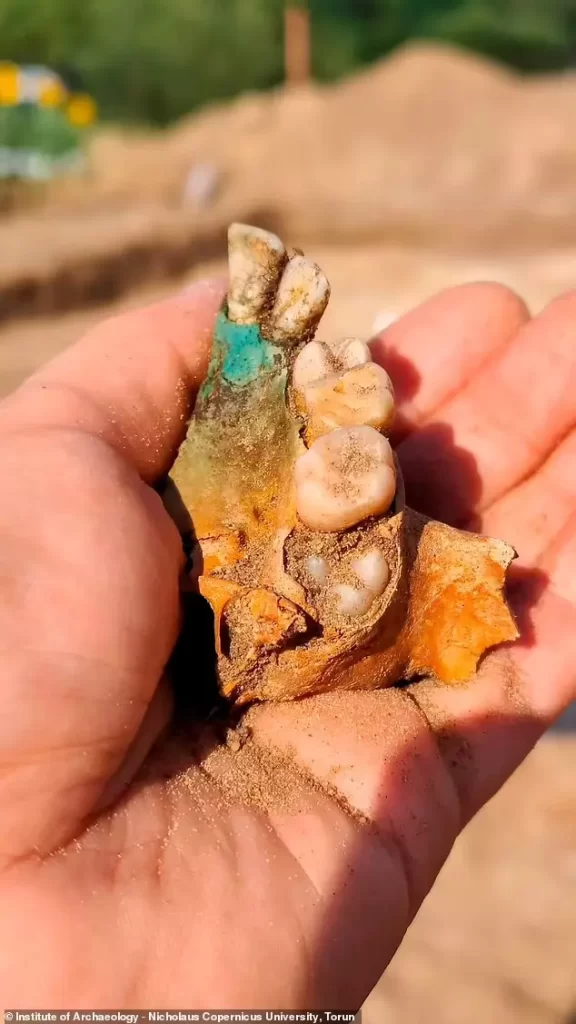

Near the child’s grave, the researchers found a cluster of loose bones belonging to three other children and the fragment of a jaw stained green, which researchers say could have come from a copper coin placed in its mouth.
They also found the remains of a pregnant woman.
The university’s Magdalena Zagrodzka said: ‘The foetus was determined to be roughly 5-6 months old.
‘This is surprising, because the bones of children of this age are poorly mineralized, so they are usually not preserved.’
The latest discoveries were made at the same site where last year the archaeologists found the remains of a ‘vampire woman’.
Found less than five feet away, the woman who was thought to have held a high social status was found with a sickle placed over her neck.
The skeleton, also found in Pień by Poliński and his team, also had a padlock on the big toe of her left foot to prevent her from returning from the dead
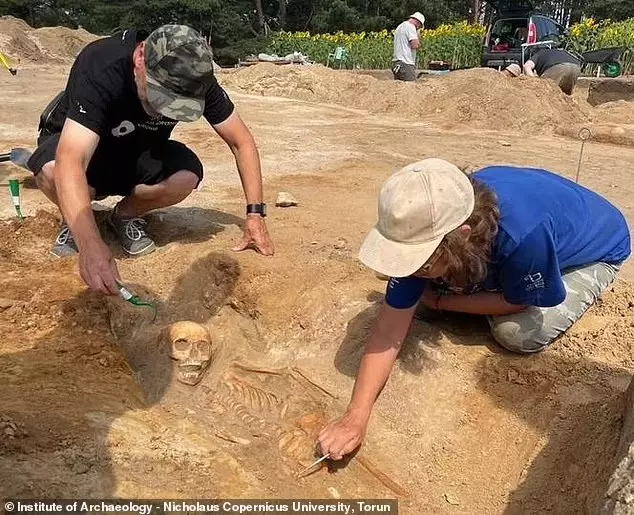

Poliński said: ‘Ways to protect against the return of the dead include cutting off the head or legs, placing the deceased face down to bite into the ground, burning them, and smashing them with a stone.
‘The sickle was not laid flat but placed on the neck in such a way that if the deceased had tried to get up most likely the head would have been cut off or injured.’
He added that the padlocked big toe on the skeleton’s left foot likely symbolised ‘the closing of a stage and the impossibility of returning.’
In 2015, archaeologists in the village of Drewsko 130 miles away found five skeletons buried in a similar manner at a 400-year-old cemetery.
Sickles were found pressed against the throats of an adult man, who was between 35 to 44 years old, and an adult woman around 35 to 39 years old.
An older woman, who was 50 to 60 years old when she died, was buried with a sickle laying across her hips, and a medium sized stone at her throat.
Records of myths about the undead date back as far as the 11th century in Eastern Europe.
People feared that some who were buried would claw their way back up to the surface as blood-sucking monsters, and terrorise the living.

It is not uncommon the region to find burial sites where a metal rod – or a stake – have been hammered through the skull of the deceased.
People at the time believed this was one way to ensuring the person stayed dead.
In some parts of the continent – particularly among Slavic people – belief in the legends of vampires became so wide-spread that it caused mass hysteria, and even led to executions of people thought to be vampires.
People who died in untimely ways – such as through suicide – would also often have been suspected of vampirism, and their bodies would have been mutilated to prevent them from rising from the dead.

